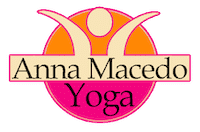For a start, what does ‘Vinyasa’ mean?
Its definition is ‘a method of yoga in which vinyasa movements form a flowing sequence in coordination with the breath’. In India this ‘flowing sequence’ was used as an introduction to new recruits joining Yoga schools, starting their journey with their teacher (Guru).
The most well known Vinyasa sequence is the ‘Sun Salutation’ (Surya Namaskar).
Historically these new students would have been young; children or teenagers. These flowing sequences are designed to get the body moving, releasing tension and quickly improving flexibility: a great introduction to Yoga for the young. It is still how children are usually taught Yoga today as their minds find it hard to focus for longer. Vinyasa is part of Iyengar Yoga , but only a small part. It is quite popular as it really does get the blood flowing, the heart racing and keeps the mind busy with trying to remember the sequencing. it is a high adrenaline activity that suits some beginners. Vinyasa is part of Iyengar Yoga, here is a video of Mr.Iyengar teaching a fast flowing Vinyasa sequence in 1977
When the mind – body connection is lost
However, after a short time the Yoga practitioner will find that the mind is no longer occupied by Vinyasa, the mind is able to wander off whilst performing it. This is a sign that the mind-body connection has been lost. This is when a more balanced Yoga practice is appropriate.
In the Indian medical system (Ayurveda) it is believed that fast flowing sequences increase Vata (wind) through flowing movements. It also increases Pitta (fire) through its energy and ferocity. However flowing sequences are lacking in Kapha (earth) meaning it does not ground or stabilise the student. A balanced Yoga practice should encompass all aspects thus helping to balance all of the body’s systems.
In the West students are coming to Yoga who are not young, who may have injuries, who often are on medication for various health problems. Unfortunately, for these students, a programme of just performing Vinyasa could do more harm than good. As an Iyengar teacher I have been taught to ‘do no harm’. I require my students to fill out health questionnaires so I can determine which poses should be avoided, and I can then advise on which are recommended for their stage in life. For example, if a student has a knee injury, it is important that the knee does not twist, and high impact movements are avoided. Therefore Vinyasa would be contraindicated. If a woman suffers from heavy menstrual periods, Vinyasa could worsen them. People who suffer from anxiety need a grounding practice that can help to earth them, physically and mentally.
Vinyasa is part of Iyengar Yoga but it is only taught when appropriate for the students. A balanced practice of Yoga is said to include roughly 25% restorative and Pranayama. Just a small part, over my teaching year, probably about 10%, would be fast flowing Vinyasa.
